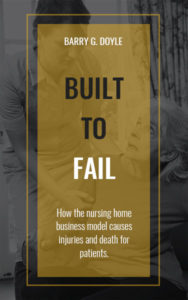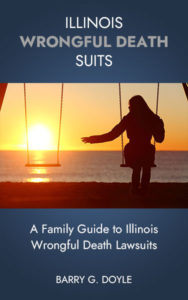The Illinois Department of Health has cited and fined Goldwater Care Danville when staff failed to implement required fall prevention measures for a severely cognitively impaired resident, resulting in a devastating fall that broke his hip and caused a head laceration requiring five staples. The facility’s Medical Director confirmed the fall was preventable and stated the resident will “most likely be bedbound until he passes away” due to his injuries.
The resident in question, who required maximum assistance with most daily activities and was classified as a fall risk, was found lying on the floor with his head on the bathroom floor and his body in the bedroom area. Staff discovered him after hearing “a loud thud noise” followed by the resident “yelling out ‘Help!'” When found, the resident had pants around his ankles and was bleeding from a head wound, complaining of severe hip pain that he rated as “10 out of 10.”
The fall investigation revealed multiple safety violations that contributed to the incident. The resident’s care plan specifically required several fall prevention interventions including “proper functioning and placement of an electronic bed alarm,” “fall mat next to the resident’s bed,” and ensuring the resident’s “call light is within reach.” However, none of these safety measures were in place at the time of the fall. The resident “was not laying on a personal alarm,” “did not have a fall mat visible in his room,” and his “call light was not activated at the time of the fall.”
Staff members provided conflicting accounts about how the resident came to be wearing pants, which contributed to his fall. The incident report noted that the resident’s “clothing was a predisposing factor” in the fall. One nurse described finding the resident “wearing khaki casual pants around his ankles” and stated “it looked like the resident was laying in bed and had tried to get up and walk over to use the bathroom but tripped because his pants were around his ankles.” However, a Certified Nurse Aide explained that the resident “would not have been able to put his own pants on” due to his cognitive and physical limitations.
The aide revealed that night shift staff had dressed the resident in regular pants as part of a “common practice for the night shift to get some residents up or get some resident half dressed to make it easier on the day shift staff to get everyone up and to breakfast on time.” This practice appears to have contributed to the fall, as the severely impaired resident became entangled in clothing he could not properly manage while attempting to reach the bathroom independently.
The resident sustained serious injuries requiring immediate hospitalization, including “an acute angulated impacted fracture of the Right Subcapital Femoral neck,” “a 3.0 centimeter laceration to the Right Frontotemporal region which required five staples,” and “abrasions to his forearms” with skin tears on both arms. The facility’s Medical Director confirmed that “the resident was sent to the emergency room after his fall and diagnosed with a Right Femoral fracture and Right Temporal lobe laceration.”
Even after the serious fall, the facility continued to fail in providing basic safety measures. During follow-up inspections, investigators repeatedly found the resident’s “call light was laying on the floor next to his bed” and “out of reach,” with no fall mat visible and no personal alarm in use. When asked about this, a Licensed Practical Nurse confirmed that the resident “cannot reach his call light when it is laying on the floor” but staff were not consistently ensuring it remained accessible.
The Medical Director acknowledged the severity of the situation, stating that “the resident’s fall was preventable due to the fall interventions not being in place at the time of the resident’s fall” and that “basic fall precautions typically instituted were not followed resulting in certain facility protocols not being followed.” The doctor noted that the resident’s family “decided to not pursue a surgical option” for the broken hip, meaning the resident “will most likely be bedbound until he passes away” and “has had a general decline since his fall.”
The incident highlighted systemic failures in the facility’s fall prevention program, which requires “measures which determine the individual needs of each resident by assessing the risk of falls and implementation of appropriate interventions to provide necessary supervision and assistive devices.” The Assistant Director of Nursing acknowledged that “staff should know the fall interventions for the residents” and that “fall interventions should be in place to help prevent a fall,” but clearly these protocols were not being followed consistently, resulting in preventable and life-altering injuries to a vulnerable resident.
One of our core beliefs is that nursing homes are built to fail due to the business model they follow and that unnecessary accidental injuries and wrongful deaths of nursing home residents are the inevitable result. Our experienced Chicago nursing home lawyers are ready to help you understand what happened, why, and what your rights are. Contact us to get the help you need.


